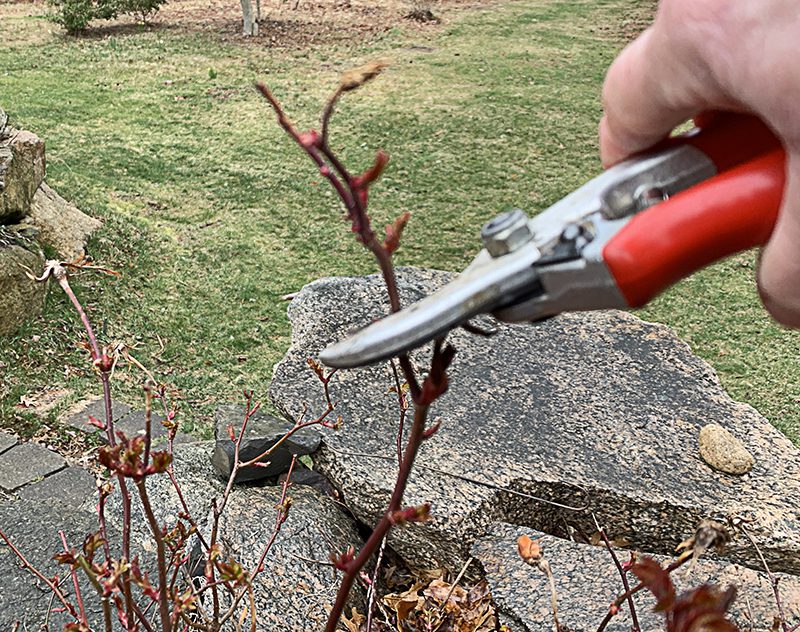What Can I Prune in April?
What Can I Prune in April?
Spring pruning tips for Cape Cod
Puzzled about pruning? Do you find yourself wondering what you can cut back now, and what you should wait to trim? We’ve got a seminar on pruning coming up this Sunday, but whether you can attend or not, here are some tips for spring shrub, tree and vine care on Cape Cod.
!. It’s time to prune roses! In April the buds start to swell on the rose bushes, and once you can easily tell what is living and what’s dead, it’s time to prune. Usually on Cape Cod the time for pruning roses coincides with the Forsythia blooming. But if you can see new growth and can tell which stems are dead, you can tackle these plants now.
2. Start pruning roses by removing all dead wood. If the top of a cane has died, clip it off. If an entire stem is gray or black, and there are no buds growing, remove it. Get rid of all of the dead wood before you clip the roses back.

3. Don’t prune spring-flowering plants until after they finish blooming. So wait to trim lilacs, azaleas, forsythia and other early-blooming plants until their flowers fade.
4. Wait to prune blue lacecap or mophead hydrangeas until you see small green leaves on their stems. You want to see these green buds and small leaves opening on the canes so you don’t remove them; those buds contain the germ of this summer’s flowers. Once those green buds and leaves are easy to see, prune these plants by only removing canes that don’t contain any of that green growth.

5. Prune your panicle hydrangeas (the ones with the round or cone-shaped white and white-to-pink flowers) now. Remove any crossed branches and stems that are going into the center of the plant first.

6. If you can clip off dead Clematis stems, do so, but often it’s hard to tell what’s living and what’s dead. If your Clematis commonly flower in June, you can clip them back now. Either cut some stems to 4 feet tall and others to 3 feet tall, or rejuvenate the entire plant by cutting it back to one foot tall.
7. Remember that whenever possible, pruning should be done to improve appearance, not control size.

Subscribe To Our Newsletter
Sign up for our weekly email about sales and events.
